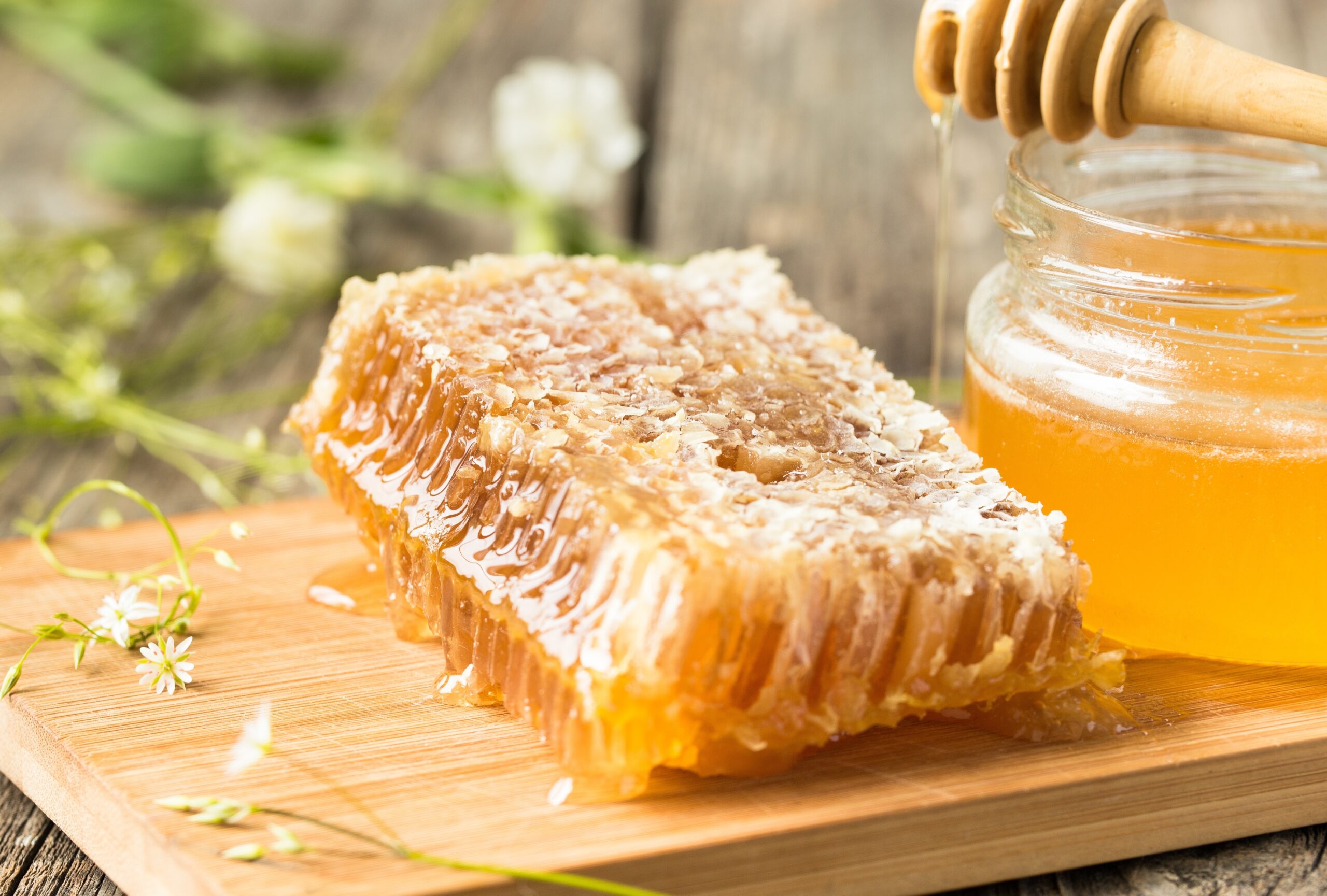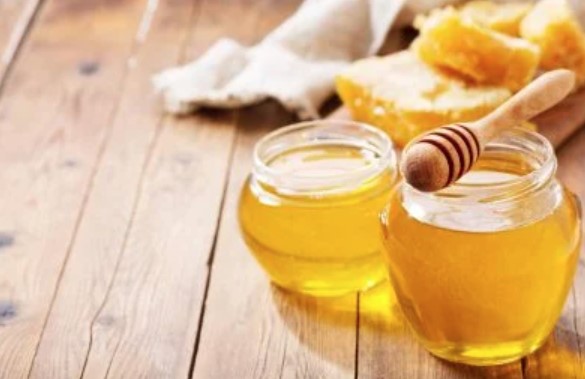Honey comes in many varieties and flavors. Find out more here about the most important types of honey at a glance and tips for buying honey.
Honey – what is that anyway?

Honey should not be missing on many breakfast tables. In our shops you will find a large selection of different types and flavors. But how exactly is honey defined?
According to the definition of the honey ordinance of the Deutscher Imkerbund e.V., honey may only be designated as such if it can be proven to be made from nectar collected by bees. For example, if bees are fed with sugar cane juice and the excretion products are then skimmed off, that is not enough for the designation.
The numerous types of honey differ in terms of the botanical area of origin, the reference plants of the nectar or the method of extraction.
Types of honey at a glance
Blossom honey (also: nectar honey)
Blossom honey is a collective term for all types of honey in which bees collect pollen and the sweet nectar from plant blossoms. The term blossom honey does not initially refer to any special type of blossom or type of production.
Forest honey (also: honeydew honey)
Forest honey is a special kind of honey. Here the bees do not collect nectar from the inside of the flowers, but from the excretions of aphids and small insects. They leave behind sugar sap on plant parts: the so-called honeydew. Bees collect honeydew mainly in spruce forests. Forest honey has a spicy, aromatic taste and is dark brown in colour.
A special and rare forest honey is fir honey, which can only be obtained in fir forests.
Linden honey
Linden honey consists of nectar collected from linden blossoms and often also contains a proportion of honeydew from linden trees. Linden honey contains essential oils from the linden tree, which is why it is said to have healing properties. It tastes fruity with a slight menthol note.
Lime blossom honey
In contrast to linden honey, linden blossom honey does not contain any honeydew, it is obtained exclusively from the nectar of the linden blossoms. Linden blossom honey is a type of honey and is almost whitish in colour.
Acacia honey
Real acacia honey comes from the acacia trees of southern countries with a subtropical climate. It is mild, clear and ideal for sweetening tea or desserts.
Officially, robinia honey can also be declared as acacia honey, although this is not biologically correct. Although the robinia is similar to the acacia, it is adapted to other climatic conditions and can therefore also thrive in our latitudes. Robinia honey is therefore also referred to as “false acacia honey”.
A look at the indication of origin will tell you whether it is “real” or “fake” acacia honey: if the honey comes from Germany or Northern Europe, you are probably dealing with robinia honey. If the country of origin is Africa, Australia or a southern European country on the label, you can assume acacia honey.
Rapeseed honey (also: rapeseed honey)
Rapeseed honey is a classic among the local types of honey and is widespread in Germany. The mild sweetness is particularly popular with children.
Chestnut honey
This variety contains both the nectar of the sweet chestnut flowers and their honeydew. The light brown honey tastes tart, slightly bitter and spicy.
Mountain blossom honey
Real mountain blossom honey comes mainly from alpine mountain regions, where the bees get their nectar from wild mountain flowers. Mountain blossom honey is rather dark and has a strong aroma.
Summer Blossom Honey
Summer blossom honey is honey that is obtained from the nectar of various summer flowers and berry blossoms, such as raspberries, blackberries or white clover. Summer blossom honey is seasonally produced and produced between June and September. It is dark yellow to light brown and tastes aromatically sweet.
Wildflower honey
Wildflower honey is made from the nectar of wildflowers that bees find around their hive. In contrast to varietal honey, it is not possible to determine the exact composition of wildflower honey because the bees choose their flowers themselves.
For wildflower honey, the hive must be in a protected area with sufficient wildflowers. However, since large-scale natural landscapes in this country continue to decrease, it is becoming increasingly difficult to find suitable places for the beehives. In Germany, wild blossom honey comes mainly from the Alpine regions, the low mountain ranges or the natural landscapes of the east.
Manuka honey
Manuka honey is special and is used more as a medicinal product than as a food. Manuka honey comes from special bee colonies in New Zealand and, similar to the honey component propolis, contains valuable ingredients that can fight viruses, bacteria and fungi.
For the precious Manuka honey, bees collect the nectar of the South Sea myrtle (Manuka) native to New Zealand. Both the ingredients of the plant itself and the special processing of the nectar by the bees lead to a very rich honey with medicinal effects.
Which type of honey to buy?

In order to make your decision when buying honey easier, you should first think about the sustainability of the honey.
Better regional and organic
When it comes to honey, the motto is: regional instead of global. With the purchase of local honey you support local beekeepers from the region and contribute to the preservation of biodiversity. Thanks to short transport routes, regional honey also has a better CO2 balance than honey imported from far away.
For example, the label “Real German Honey” indicates local honey. This seal may only be used by members of the German Beekeepers’ Association who work to the highest quality standards.
Types of honey produced in Germany are:
rapeseed honey
robinia honey
Summer Blossom Honey
chestnut honey
forest honey
With the purchase of organic honey, you also ensure that beekeeping and production are carried out according to organic guidelines. In the case of honey from organic production, the beehives must be placed in such a way that the animals can find plenty of organic wild plants as a food source within a radius of at least three kilometers.
The hives themselves must also be built from natural raw materials and contain no harmful substances. The use of chemical medicines against bee diseases is prohibited with organic honey. Incidentally, the same guidelines usually apply to organic honey in this country as to “real honey”.

